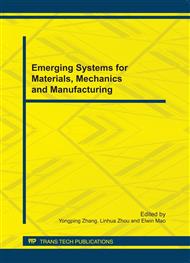p.428
p.432
p.437
p.441
p.445
p.451
p.457
p.462
p.466
On the Living Satisfaction of University Students Based on the Restriction Factors of Recreational Activities - A Case Study of Zhejiang
Abstract:
Recreational activities can advance the satisfaction of life and increase the comfort and it has been a strong force of the social and cultural development. In this research it applies the students from four universities in Zhejiang as research objects and analyzes the restriction factors in recreational activities. The result shows that the largest restriction in recreational activities is structure dimension(M=2.96),the largest satisfaction in recreational activities is physical endurance(M=3.96). From the regression model of restriction and satisfaction in students recreational activities, interpersonal and internal restriction is the most notable factor and among it interpersional characteristic is the highest
Info:
Periodical:
Pages:
445-450
Citation:
Online since:
October 2011
Authors:
Keywords:
Price:
Сopyright:
© 2012 Trans Tech Publications Ltd. All Rights Reserved
Share:
Citation:


